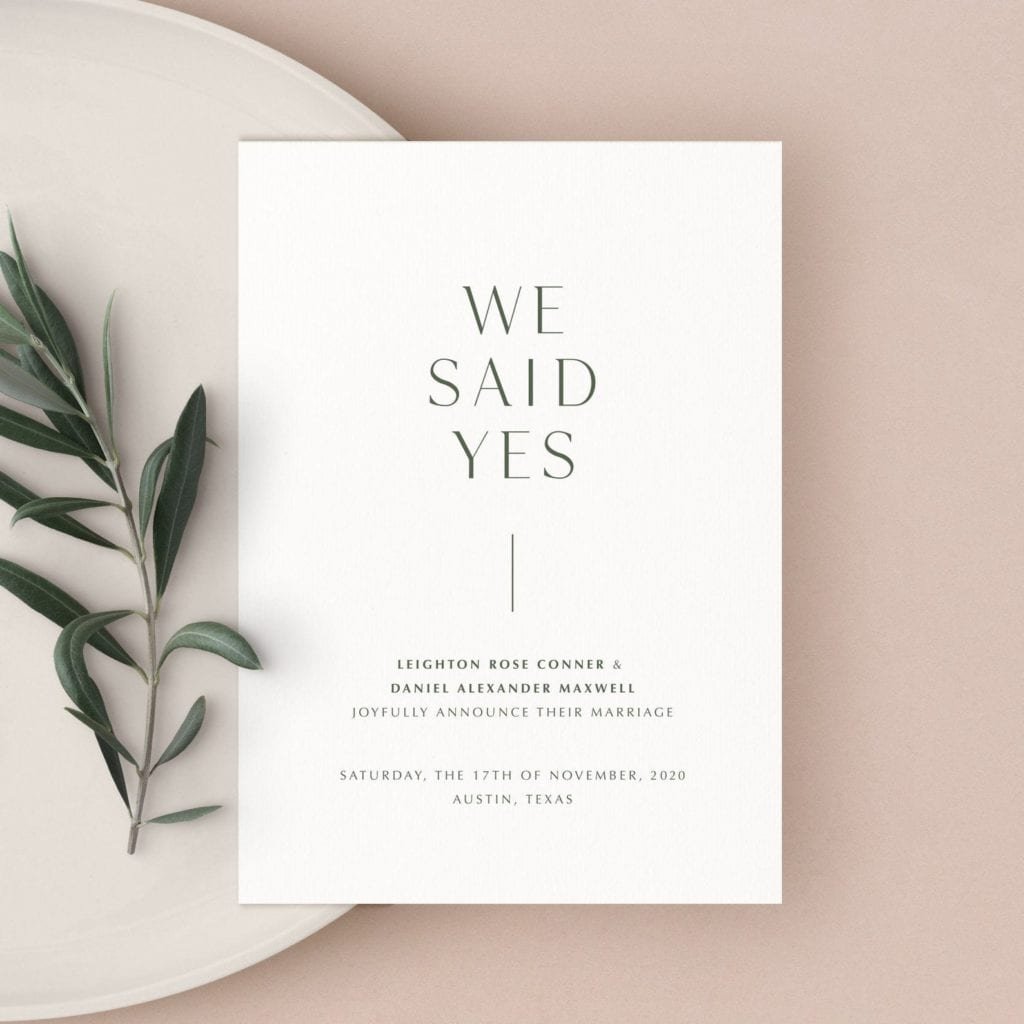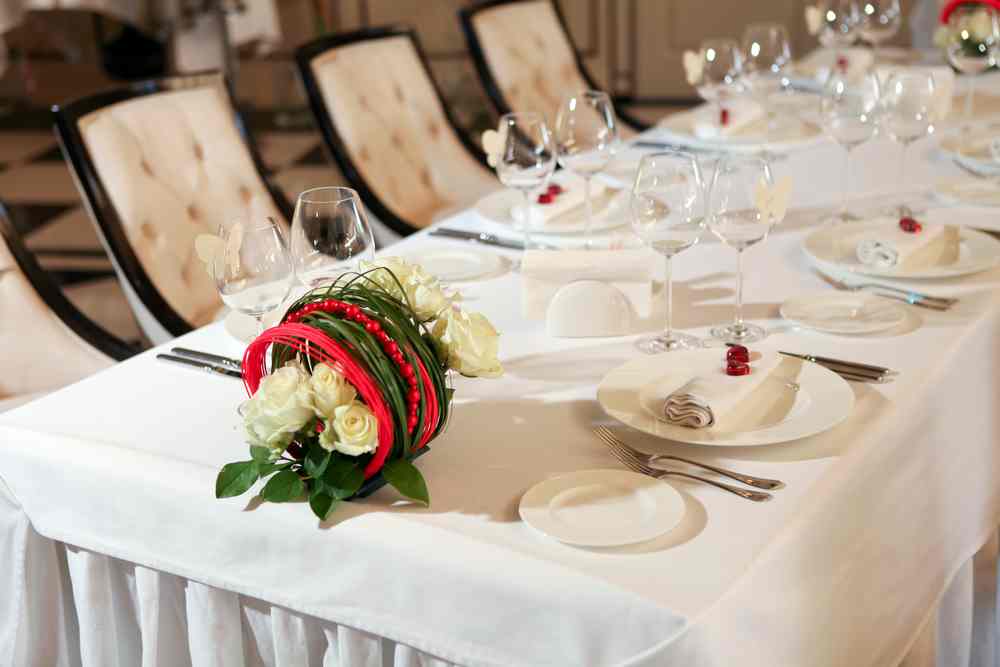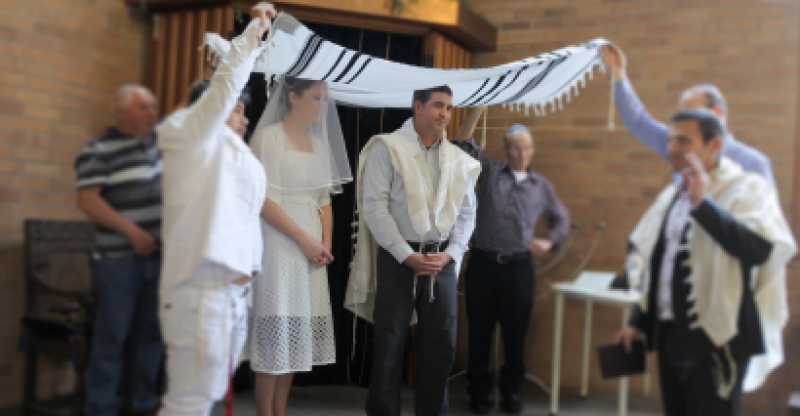A Comprehensive Guide to Jewish Wedding Invitation Etiquette
For Jewish couples, wedding invitations hold deep significance. These ornate documents don’t just share logistics – they convey spiritual meaning and set the tone for your sacred celebration.
Crafting traditional, tasteful invitations honors your heritage and provides guidance to guests. This comprehensive guide covers all aspects of Jewish wedding invitation etiquette. Follow these tips for elegant, thoughtful invites your families will cherish.
What is a Jewish wedding invitation etiquette?
Jewish wedding invitation etiquette encompasses the customs and traditions associated with crafting and sending wedding invitations in the Jewish culture. It involves adhering to specific guidelines related to wording, format, and content to honor the heritage and significance of the occasion. Respect for family traditions, the inclusion of key elements, and proper wording to convey the joyous celebration are all central to Jewish wedding invitation etiquette.
The Significance of Wedding Invitations in Jewish Tradition
In Judaism, weddings join two souls in an eternal bond. The written word carries power, so the language and symbolism of invites conveys this weight.
Invitations also demonstrate respect for guests. Proper etiquette enables their full participation. Honoring traditions reassures families, while personal touches highlight the couple’s unique relationship.
While logistics are important, the deeper purpose is creating a sacred space to unite communities in celebration. Each element of the invitation sets this tone, from phrasing to presentation.
Crafting Wording That Honors Traditions
The words on your invitation convey meaning and set expectations. Follow these tips to strike the right tone:
Use Traditional Hebrew Phrases
Incorporate Hebrew terminology and blessings to embrace Jewish heritage:
- “B’sha’ah tovah ur’uzatah” means “in a good time and fortunate hour.” This welcomes guests to your favorable occasion.
- “Mitzva tadliku” translates to “commandment to be sanctified.” It signals your wedding sanctifies your union.
- “B’ezrat Hashem” means “with the help of God.” This phrase offers gratitude for blessings.
- “B’simcha uvit’shalom” wishes joy and peace upon your guests.
You may include English translations or transliterations so the phrases are accessible. Work with your officiant to identify meaningful wording.
Spell Names Phonetically
Since Hebrew contains different alphabets and pronunciations than English, provide phonetic spellings of names. For example:
- Rebecca bat Avraham v’Sarah
- Moshe Ben Hillel v’Rivka
This allows guests to honor your loved ones, even if unfamiliar with Hebrew names.
Use Respectful Titles for Family
Include honorifics when mentioning family, as Jewish tradition values elders and conveys stature through language.
- For your parents, refer formally to “Doctor and Mrs. Cohen” or “Rabbi and Mrs. Feldman.”
- Grandparents can be honored as “savta” and “saba”, Hebrew for grandmother and grandfather.
- Aunts, uncles and siblings deserve reference as “Ms. Sarah Feldman”, not just “Sarah.”
Refer to Hosts Properly
Traditionally, the groom’s parents serve as hosts. Reflect this by listing:
- “Mr. and Mrs. Jacob Steinberg” as main invitation hosts.
- “Together with Mr. and Mrs. Jordan Goldstein,” for the bride’s parents.
Some modern couples list both sets of parents jointly. This honors new family bonds.
Choosing Auspicious Colors and Symbols
Color and symbolic motifs add meaning in Jewish tradition. Select palette and design elements that signify blessings, evoke nature, and honor Judaism.
Avoid Black, White or Red
Avoid black, which signifies mourning, loss and death. Red also taboo, as it evokes sin, vengeance and bloodshed. Likewise, eschew stark white, which represents emptiness.
Instead, embrace rich colors like blue, purple, pink and gold:
Consider a Blue Palette
Different shades of blue represent divinity, spirituality and heaven. Light blue conjures health, tranquility and purity. Darker blues like navy and cobalt convey depth, wisdom and stability. Turquoise has protective powers against the evil eye.
Work in Purple or Pink
Purple symbolizes royalty, passion, majesty and spirituality. Pink represents lively exuberance, youthfulness, gladness and joy. Both colors convey the happiness of your union.
Use Golden Accents
Gold represents enlightenment, prosperity, the glow of the home hearth and God’s radiance. Touches of shimmering gold add luxe style while also embracing Jewish symbolism.
Incorporate Meaningful Motifs
Weave in sacred Jewish visuals like:
- Star of David: This six-pointed star symbolizes Judaism and God’s rule over the universe.
- Mezuzah: This casing around Scripture attached to door frames signified Jewish homes.
- Chuppah: The wedding canopy represents home and happiness.
- Ketubah: Decorative text or motifs from this marriage contract offer spiritual depth.
- Noah’s Ark: Pairs of animals evoke partnership and salvation.
Draw From Nature
The natural world mirrors the beauty and bounty of God’s blessings. Incorporate:
- Doves: A symbol of love.
- Vines: Signify prosperity and growth.
- Lions: Strength and courage.
- Flowers: Beauty, unity and the Garden of Eden.
Honoring Deceased Loved Ones Meaningfully
Jewish tradition provides moving ways to honor deceased relatives on such a special occasion:
Invite Passed Souls Symbolically
Some couples leave blank lines on the invitation to invite the neshamot, or souls, of deceased family. This could include:
- Grandparents
- Parents or siblings who have passed
- Important community members
Though not physically present, this symbolically joins their spirits in celebration.
Make Charity Donations in Memoriam
In lieu of gifts, some families suggest donations to meaningful causes in memory of late loved ones. This resonates more than material presents.
You can list charity details on a separate enclosure card, such as:
- Jonathan Smith Memorial Fund and Cancer Research Institute, in memory of bride’s father
- Magen David Adom, in memory of groom’s grandparents who survived the Holocaust
This honors their character and provides consolation to grieving relatives.
Set Up a Memorial Display
Create a display at the ceremony or reception with framed photographs of deceased loved ones. This serves as a touching memorial:
- Drape a black ribbon over portraits to signify mourning.
- Place a yahrzeit candle next to each photo and light during the reception.
- Arrange flowers like white roses or carnations around the memorial.
Seat immediate family near this tribute so they feel the presence of those remembered.
Addressing Guests’ Partners Sensitively
How you address guests and their plus-ones communicates sensitivity and respect on your invites. Some guidelines:
List Married Couples Together
Always list married couples’ names side-by-side on one line, without “Mr.” or “Mrs.”
For very formal events, you may include “Doctor and Mrs. Jordan Smith” for distinguished married couples where one spouse holds an esteemed title like “Doctor.”
Welcome Long-Term Partners
If guests are engaged, cohabitating long-term or in very serious relationships, include their partners by name on the invitation. For example:
- Michael Rosen and John Gardner
- Rachel Shapiro and Rebecca Solomon
- Sabrina Cohen and Fiancé Miles Schiff
Separate Divorced or Estranged Couples
For divorced or separated couples, send a separate invitation to each individual household. This prevents awkwardness between ex-spouses.
Allow Single Guests a Plus One
After addressing couples, specify “and Guest” for any single attendees. This graciously permits them to bring a date to share in your milestone.
Making Allowances for Children
Decisions about including children require tact and discretion. Consider these tips:
Set Clear Age Limits
If you prefer an adults-only affair, the invitation should specify “21 and over” or “16 and over.” This clarifies expectations.
For a mixed crowd, consider “12 and over” or “10 and over.” Be prepared to enforce limits to prevent disruptions.
Assign Special Roles for Young Relatives
While you may limit attendance, offer ceremonial duties to special children in your families like:
- Niece and nephew as flower girl and ring bearer
- Your godchild participating in candle lighting
This makes them feel involved without compromising the guest list. They can attend the ceremony, then leave before reception.
Provide Babysitting Services
Help parents enjoy the celebration by providing on-site babysitting services for their young children.
Choose a hotel with Kids Club programs, or hire reputable childcare professionals to supervise young guests in a hospitality suite while parents attend events.
Specifying Logistical Details Clearly
Beyond the date and locations, your invites should address key logistics to set expectations.
Share Dress Code Details
Let guests know the attire you expect by specifying:
- Black Tie
- Formal (evening gowns for women and tuxedos for men)
- Semi-Formal/Cocktail Attire
Note if heads should be covered upon entering ceremonies at synagogues. Provide attire guidelines for other events like rehearsal dinners.
List Accommodation Information
If you have reserved a room block, list lodging details and booking codes. For destination weddings, give airport transportation options too.
Register for Gifts and Donations
Include registry information so guests understand gifting guidelines. List where you are registered and mailing address.
Also share charitable causes for donations made in lieu of gifts, including contact information and tax ID for tax deduction purposes.
Crafting Invitation Suites With All Components
Traditional invitation suites require several coordinated pieces. Here are main elements to include:
Save the Date Cards
These provide advance notice about 6-12 months before the wedding. Details like venue and city allow guests to plan travel.
Main Invitation Card
The primary details live here – names, date, time, locations. Include meaningful Hebrew phrases and English translation.
Reception Card
If ceremony and reception are separate, provide reception specifics like timing, venue, dress code and transportation on a dedicated card.
Response Card and Envelope
Make it easy for guests to RSVP with card and envelope. Ask for song requests, meal choices and participation in rituals.
Accommodation Card
If room blocks or group rates available, share lodging details for out-of-town guests. Include booking codes and deadlines.
Weekend Itinerary
For destination or multi-day weddings, provide a schedule of surrounding events like welcome dinner, brunch, day-after excursion etc.
Maps
Include maps displaying locations of far-flung venues to simplify travel for guests.
Thank You Card
Provide a blank note card and envelope to smoothly facilitate guest thank you notes.
Choosing Meaningful Stationery
Upgrade your paper, printing and envelopes to complement your elegant wording.
Select High-Quality Cardstock
Upgrade from regular paper to cotton, recycled, textured or thick cardstock. This communicates formality. Opt for heavier weight paper around 120-140 lbs.
Consider Letterpress Printing
Letterpress creates a beautifully embossed, tactile impression. The dimensional quality elevates the suite.
Accent with Metallic Foil Details
Adding gold, silver or colored foil accents provides a touch of shine. From small design motifs to full envelopes, foil nods to festivity.
Pick a Refined, Legible Font
Skip whimsical script fonts that look informal. Opt for easy-to-read serif fonts like Times New Roman.
Include Inner and Outer Envelopes
Inner envelopes hold invitation contents neatly. Outer envelopes ensure pristine mailing and add formality.
Upgrade Envelope Linings
Lined envelopes complement the aesthetic. Try shades that coordinate with your color scheme.
Use Custom Stamps and Wax Seals
Invest in custom rubber stamps of your names, date or motifs. Wax seals add old-world, romantic allure.
Navigating Invitation Timelines and Logistics
Proper etiquette requires early, strategic preparation. Follow these timelines:
Order Save the Dates 8-12 Months in Advance
Give guests significant advance notice with save the dates 6-12 months early. This allows arrangements for travel and time off.
Mail Invitations 8-12 Weeks Before the Wedding
Send the main invitation 8-12 weeks prior to give guests time to RSVP and finalize plans.
International guests may need even more notice to book flights and apply for visas.
Send Reminders 1-2 Weeks Before RSVP Deadline
Email or call guests who have not responded one week before RSVP cutoff.
Receive Responses Up To One Month Before Wedding
Set the RSVP date 4 weeks out so you can finalize headcount, catering and seating arrangements.
Mail Thank Yous As Gifts Arrive
Promptly acknowledge gifts with handwritten thank you notes. Send within 2-3 weeks of receiving.
Complete All Thank Yous Within Three Months
Finish expressing your gratitude within three months, before memories fade.
Budgeting for Your Wedding Stationery
Edgy details like lush paper, intricate calligraphy and envelope linings command higher pricing. When setting your stationery budget, remember:
- Basic printed invites for 100 guests cost around $500.
- High-end custom suites with fine papers, calligraphy and letterpress printing often range $800 – $1500+.
- Extra components like maps, hotel inserts and response cards add cost.
- Rush printing fees apply for condensed timelines.
- Go digital with Paperless Post to save significantly on printing costs.
Prioritize must-haves, and scale back where possible to keep stationery affordable.
Navigating Special Circumstances and Guest Considerations
You may encounter special circumstances that require adaptations to etiquette:
If Honoring Workplace Leaders
Invite executives and higher-ups from your company as a professional courtesy. Address them by formal titles on outer envelope and invitation.
For Guests With Partners You Haven’t Met
Don’t include unmet partners’ names. Address them as “And Guest” so your intended recipient can choose who to bring.
If Excluding New Partners Post-Divorce
Do not address invitations to a parent’s recent girlfriend or boyfriend after divorce. This could offend the other parent.
To Encourage Responses from Important Guests
For VIP guests, follow up with a phone call or personal note after sending the invite to encourage RSVP.
When Hosting Guests With Dietary Needs
Note whether catering will be kosher or accommodate common needs like vegan, gluten free etc.
Setting the Tone Through Meaningful Invites
From time-honored traditions to personalized flourishes, your Jewish wedding invitations inform guests while conveying profound meaning. By following etiquette, you demonstrate your respect for loved ones joining you on this sacred occasion.
May the spirit imbued in your wedding suite resonate through the day’s blessings and into your bright future together. Mazel tov and best wishes!
Modernizing Traditions for Contemporary Couples
While time-honored customs carry beauty and meaning, modern couples may wish to adapt some invitation traditions. Here are ideas to honor heritage while reflecting your unique relationship:
Blend Old and New
Mix classic elements like Hebrew wording and k’tubah motifs with contemporary fonts, interactive e-vites, or photo engagement announcements. This bridges generations.
Feature Personalized Artwork
Commission an artist to hand-letter names into a custom monogram or ketubah-inspired image. Work in meaningful symbols that speak to your interfaith story.
Prioritize Your Love Story
Spotlight how you met, your proposal, or romantic themes versus formalities. Share your uniqueness as a couple through wording, poems, or illustrations.
Select Modern Palettes
Stray from traditional palette norms with on-trend hues like rose gold, deep greens, navy and blush. Metallic ink and neon add modern edge.
Showcase Photos
Incorporate engagement session portraits or whimsical snap shots within invites or enclosures. This adds a personal touch over formal posed headshots.
Go Digital
Email gorgeous e-vites complete with music, video clips or interactive features. Add online RSVP and digital gift registry links for ease.
Provide Donation Options
Suggest charitable contributions toward honeymoon expenses or causes you support. Set up online registries for seamless donations.
Welcome All Families
For interfaith or LGBTQ couples, acknowledge the unique roles of both families with inclusive wording. Celebrate your blended heritage.
Share Your Values
Consider eco-friendly invitations printed on recycled paper, or go paperless. Welcome guests to an eco-conscious, sustainably sourced event.
Guiding Guests With Additional Enclosures
Provide supplemental information to communicate helpful details:
Welcome Letter: Summarize your love story and the significance of traditions featured. Share hopes for the event’s meaning and connections formed.
Directions: Provide airport and ground transportation guidance, driving/public transit directions and parking instructions.
Dress Code: Expand on attire expectations for multiple events like welcome dinner, daytime outing etc.
Weather: Prepare guests with average temperatures, precipitation norms and sun protection advisories.
City Guide: Offer suggestions on dining, attractions and activities for out-of-town guests. Share local history and culture highlights.
Timeline: Provide a schedule overview so guests understand the cadence of celebrations and transportation times.
FAQ: Answer frequent guest questions on attire, gifting, dietary needs, child services and accommodations.
Activities: List recreational options for guests like spa appointments, fitness classes, tournaments, kids’ programming.
Local Favors: Suggest sampling locally-made foods, goods and sites. Provide a neighborhood guide.
Map: Supply a map of venues, hotels and airports. Identify distances and driving routes between locations.
Carefully Assembling and Addressing Invitations
Once designed, assemble invitations meticulously:
- Neatly stack enclosures inside color-coordinated inner envelopes.
- Double check names, titles and addresses for outer envelope accuracy.
- Use calligrapher’s pen or fine liner for pristine addressing.
- Affix stamps perfectly aligned in corner of envelope.
- Seal envelope liners and outer envelope cleanly if using adhesive options.
- Consider wax seals stamped with a custom monogram for ceremonial flair.
- Insert invites into protective outer envelope to prevent tearing or staining.
Elegant calligraphy and assembled invitations should reflect the formality of the occasion. Take great care in final presentation and mailing.
Providing Guidance and Support to Guests
Extend gracious assistance to guests throughout the process:
- Share online room blocks and group rates to simplify booking.
- Provide on-site childcare services to allow parents to attend.
- Offer transportation between venues and hotels for convenience.
- Accommodate aging relatives’ needs with handicap access and seating.
- Answer RSVP questions promptly and confirm receipt of responses.
- Help guests coordinate room shares or travel groups.
- Provide visibility to registries, gift timelines and delivery addresses.
- Show appreciation for gifts received with prompt written thanks.
Thoughtful hospitality allows friends and family to fully engage in celebrating your milestone.
Q: Should we include Hebrew phrases on our invitation?
A: Yes, it’s meaningful to incorporate 1-2 Hebrew terms or blessings like “mitzva tadliku” or “b’sha’ah tovah.” You can include a translation into English next to the Hebrew.
Q: What is the proper way to address divorced parents on an invitation?
A: Send separate invitations to each divorced parent’s home rather than addressing them together. This avoids awkwardness between ex-spouses.
Q: How far in advance should save the date cards be sent?
A: Ideally 6-12 months before the wedding. This allows ample time for travel plans for your destination wedding.
Q: Is it necessary to use inner and outer envelopes?
A: While optional, inner envelopes neatly contain all enclosure cards. Outer envelopes protect contents in mailing. Both enhance formality.
Q: Should we include charity donation options?
A: Yes, many couples suggest donations to charities in lieu of gifts. Provide charity name, mailing address, and tax ID.
Q: How do we politely ask for RSVPs from important guests?
A: Follow up a week after sending the invite with a personal call or note to kindly ask for their response.
Bringing Your Wedding Vision to Life
Jewish wedding invitations set a profoundly meaningful tone for your ceremony and celebrations. By honoring heritage while personalizing details, your stationery can tell a captivating story that welcomes guests into your joyous occasion.
Let the delight and anticipation sparked by your invitations carry through the events held on your momentous day. Surround yourself with those you love – and who love you in return. Build memories that will enrich your lives and partnership for all the years to come under the chuppah and beyond. Mazel tov!







